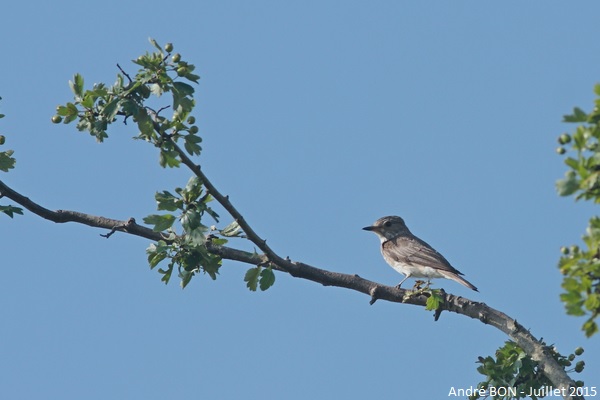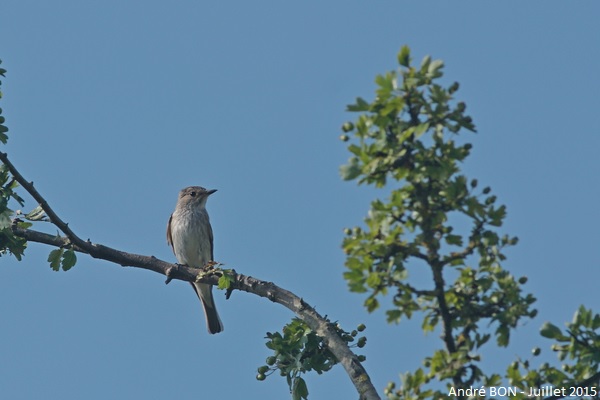

| Spotted Flycatcher (Muscicapa striata (Pallas, 1764)) |


|
|
Scientific name: Muscicapa striata (Pallas, 1764) Common name: Spotted Flycatcher French name: Gobemouche gris Order: Passeriformes Family: Muscicapidae Size: Body size: 13 to 15 cm; Weight: 11 to 19 g; Wingspan: 23 to 25 cm. Habitat: Deciduous and coniferous open forests, parks, gardens, orchards, alleys bordered by trees. Food: Insects usually caught in flight by soaring from a perch. Spotted Flycatchers may also feed on spiders, snails and small fruits. Nesting: The nest is a large cup located in a tree hole or on a flat branch. There are generally two clutches per year with 2 to 7 eggs. Migration: Spotted Flycatchers winter in sub-saharan Africa and south-western Asia. Geographic area: Europe, North Africa and Asia, north to northern Scandinavia and west to Mongolia. |
The Spotted Flycatcher has a grey-brown plumage on the upper parts and buff-grey to dull white plumage on the under parts Breast and flanks are finely streaked darker grey. The legs are short and black. The bill, rather wide at the base, is blackish and shows a paler yellowish area at the base of the lower mandible. |
| [To know more about the Spotted Flycatcher] [Next picture] [Top] |

|
I hid at the top of the trunk of a Pollard Willow, facing a small grove, to try to shoot pictures of European Bee-eaters and, in addition, I had the visit of one Spotted Flycatcher, a new species for me. |
| [To know more about the Spotted Flycatcher] [Previous picture] [Top] |

|
I have read that Spotted Flycatchers like these perches high up, in front of an open area, to set off to catch flying insects that pass nearby. |